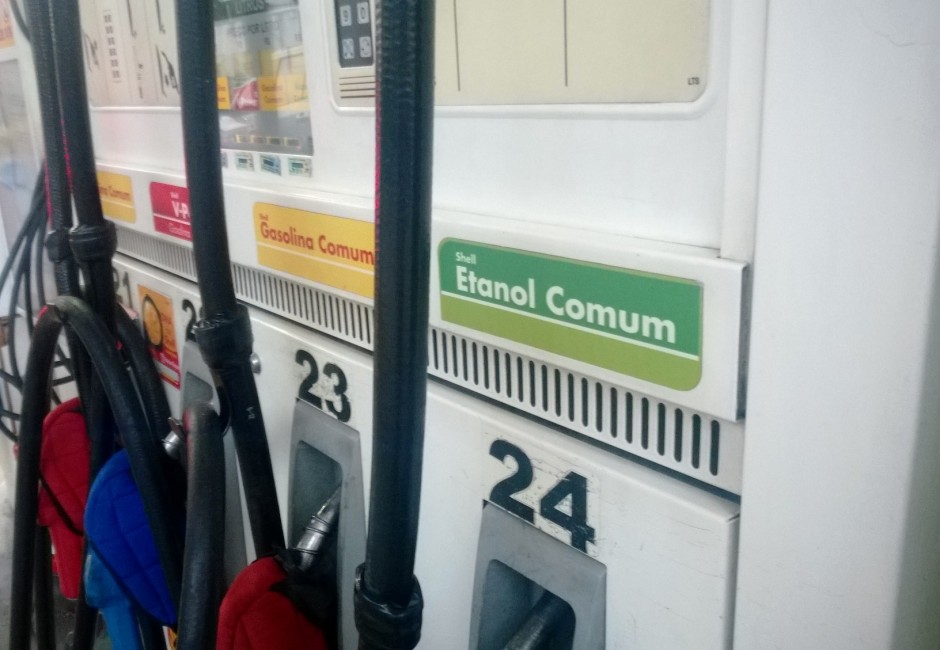EVANSTON, Ill. - The concentration of ultrafine particles less than 50 nanometers in diameter rose by one-third in the air of São Paulo, Brazil, when higher ethanol prices induced drivers to switch from ethanol to gasoline, according to a new study by a Northwestern University chemist, a National University of Singapore economist and two University of São Paulo physicists.
Environmental protection agencies across the world currently do not measure or regulate particles of this size, which studies have shown to be harmful to human health.
The research team also found when São Paulo drivers -- some two million of them -- switched back to ethanol because prices had gone down, the concentration of ultrafine particles also went down. This lockstep movement illustrates a very tight correlation between fuel choice and nanoparticles in the air.
These particles, below one micron, have the potential to get deeply into your lungs.”
Professor of chemistry, Weinberg College of Arts and Sciences
“We studied São Paulo, but there are many North American cities, including Chicago, with similar air chemistry, especially spring through fall,” said Franz M. Geiger, professor of chemistry in Northwestern’s Weinberg College of Arts and Sciences.“The push we are seeing in large cities away from gasoline and toward vehicles powered by ethanol, electricity or a mix of the two will result in a reduction of these ultrafine particles. This likely comes with a health benefit -- these particles, below one micron, have the potential to get deeply into your lungs,” he said.
Geiger and Alberto Salvo, an associate professor of economics at the National University of Singapore, led the unusual study -- their second with São Paulo big data. The fact that São Paulo consumers can and do switch between fuels for reasons unrelated to air quality provided the researchers with a real-world laboratory for studying the effects of human behavior at the fuel pump on urban air pollution.
The study was published today, July 17, by the journal Nature Communications. The prospect of increased biofuel use and mounting evidence on ultrafines’ health effects make the results policy relevant, the authors write.
“With this knowledge, we hope more money and human resources will be invested in trying to understand and possibly monitor these ultrafine particles,” said Salvo, who formerly was with Northwestern’s Kellogg School of Management. “The big unknown is what type of particles are the most harmful to health.”
São Paulo is real-world laboratory for unusual air pollution study
The interdisciplinary team conducted a regression analysis of traffic, consumer behavior, aerosol particle size and meteorological data from January 2011 through May 2011. The data studied was from before, during and after the time of a major fuel switch due to a large fluctuation in ethanol prices.
The researchers also found the choice of fuel had no effect on the concentration of larger particles. These particles include fine particulate matter 2.5 microns in diameter (PM2.5) down to particles 100 nanometers in diameter. The U.S. and many other countries regulate PM2.5, but particles smaller than PM2.5 are not regulated.
Geiger and Salvo were fortunate to have access to aerosol particle size distribution data from an unrelated research project overseen by Paulo Artaxo and Joel Brito at the University of São Paulo. Artaxo and Brito’s experiments captured data from before, during and after the major fuel switch. They are co-authors of the Nature Communications paper, along with Geiger and Salvo.
The Nature Communications study builds on an earlier study in which Geiger and Salvo found that an increase in ethanol use resulted in a significant increase in ozone concentrations in São Paulo. Officials, Geiger said, will need to weigh the increase in ozone against the decrease in nanoparticles when ethanol is used.
Next, for the third chapter of the story, the research team would like to determine what happened in terms of health outcomes in São Paulo as cars switched out of gasoline to ethanol and back to gasoline.
São Paulo has the world’s largest flexible-fuel vehicle fleet, with cars that can run on all gasoline, all ethanol or some mix of the two. Gasoline prices in Brazil are controlled by the government, and the domestic price of ethanol, which is made out of sugarcane, is determined by the world sugar price.
Findings need to be weighed against ozone increase from ethanol
Support for the research was provided by the Institute for Sustainability and Energy at Northwestern University (ISEN); the dean’s office of the Kellogg School of Management; the W Awards Program at Northwestern’s Weinberg College of Arts and Sciences; the dean’s office of the Faculty of Arts and Social Sciences, National University of Singapore (grant R-122-17 000-187-133); and the São Paulo Research Foundation (grants 2013/05014-0 and 2013/25058-1).
The paper is titled “Reduced ultrafine particle levels in São Paulo’s atmosphere during shifts from gasoline to ethanol use.” Salvo is the corresponding author.


